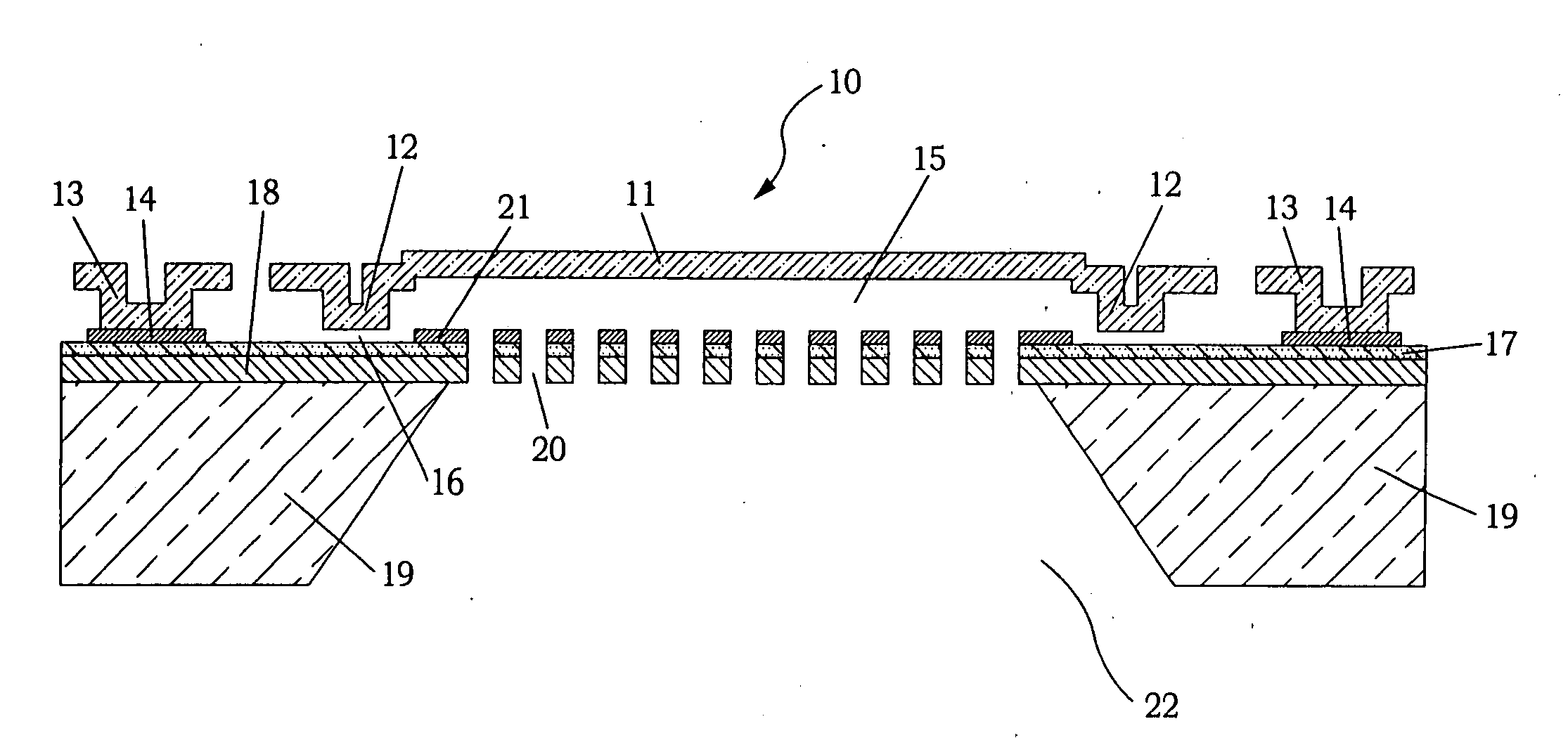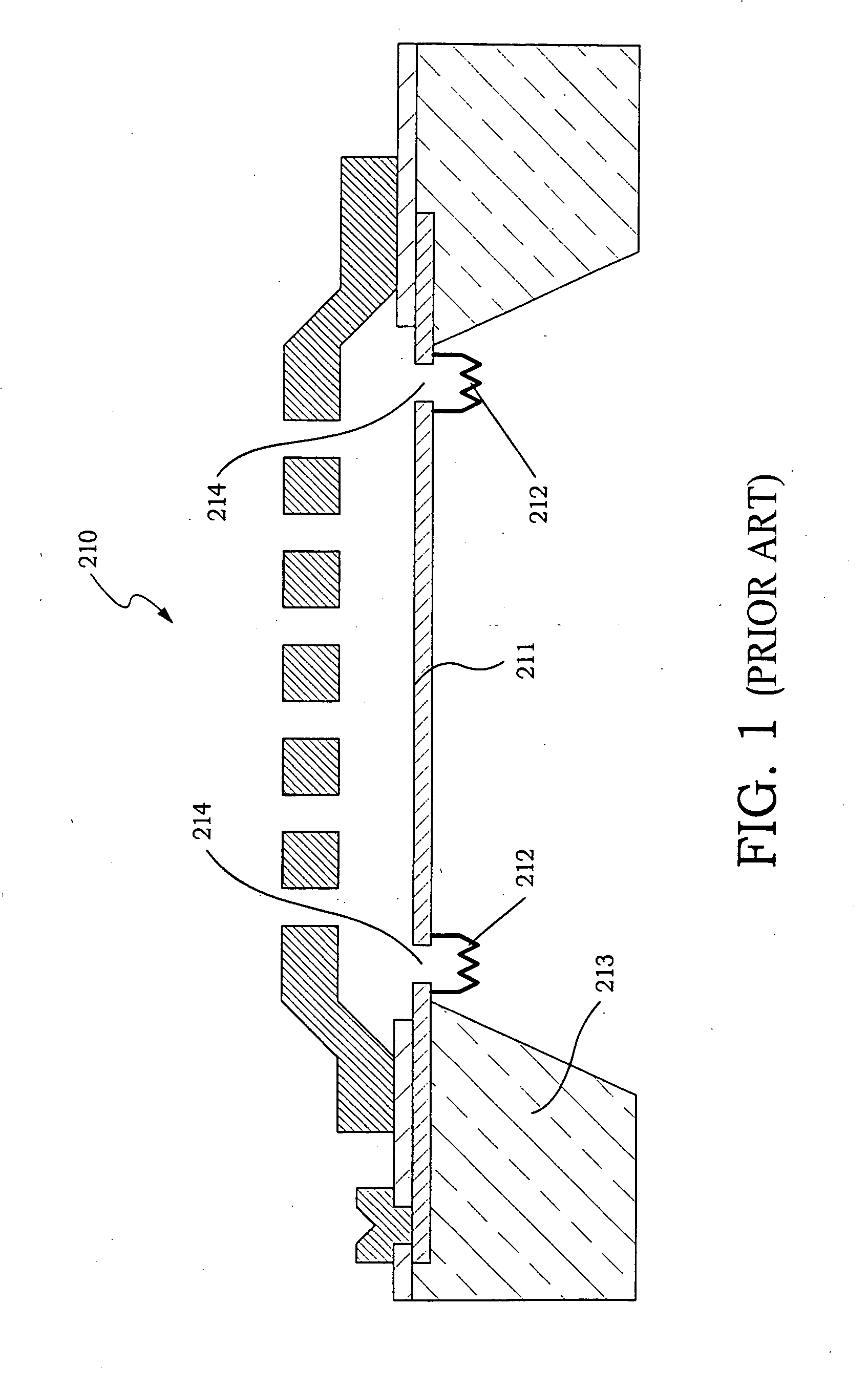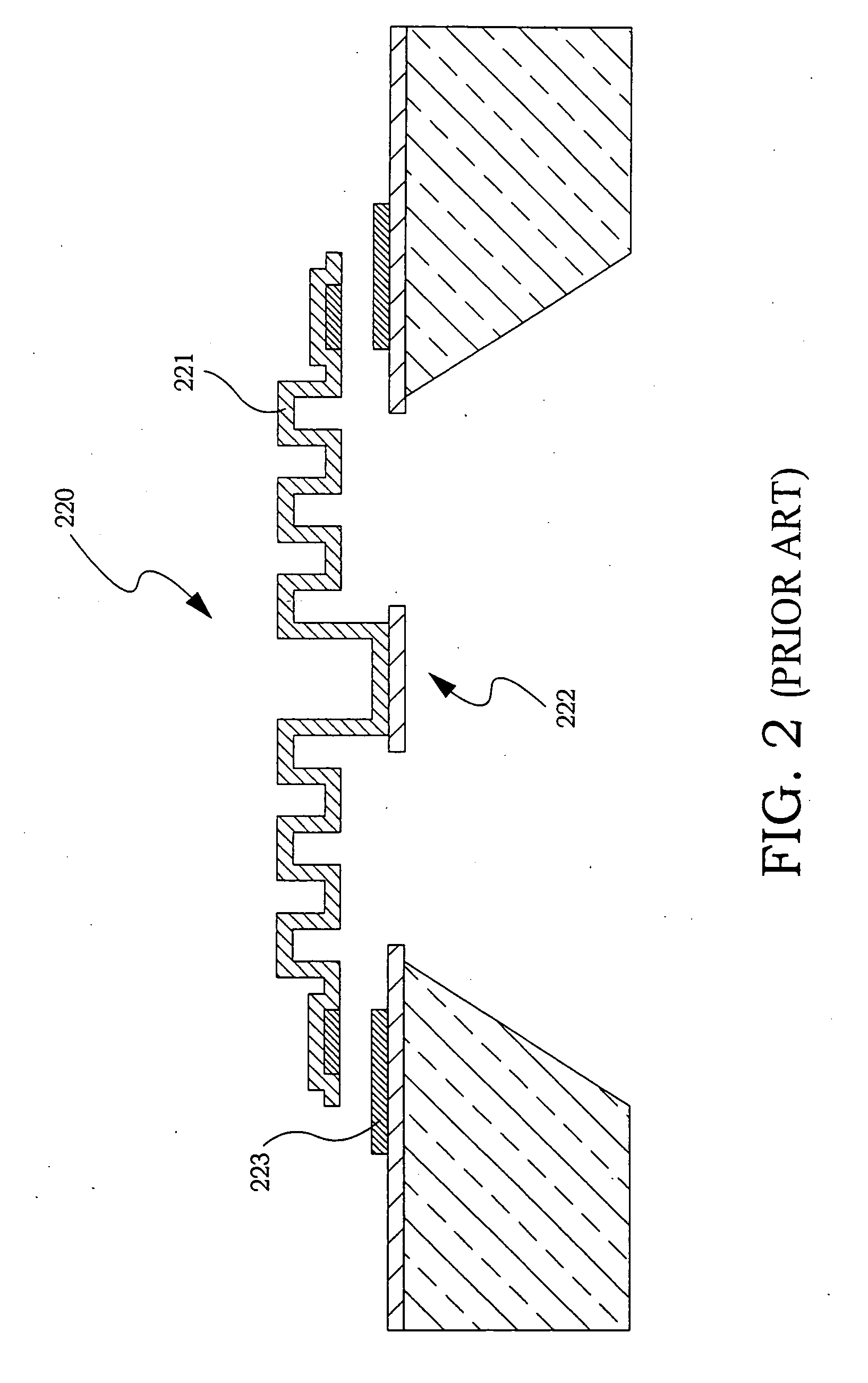Miniature condenser microphone and fabrication method therefor
- Summary
- Abstract
- Description
- Claims
- Application Information
AI Technical Summary
Benefits of technology
Problems solved by technology
Method used
Image
Examples
Embodiment Construction
[0045] One embodiment of the microphone structure 10 according to the present invention is shown in the perspective view of FIG. 7 and the cross-sectional view of FIG. 8. An electrically conductive diaphragm 11 is attached to a supporting substrate 19 by a number of flexible suspension structures 13. Conductive diaphragm 11 can be a single layer conductive material, or be comprised of several layers of which at least one is conductive. Suspension structures 13 are attached to supporting substrate 19 using a conducting anchor material 14. Diaphragm 11 contains an annular indentation 12 at the perimeter, which in the initial position forms a narrow air gap 16 with supporting substrate 19. Supporting substrate 19 is coated with an electrically insulating layer 17, which isolates the conductive diaphragm 11 and a fixed counter electrode. A fixed counter electrode 21 is made of conductive layer 14, insulator 17 , and a bulk layer 18. The purpose of bulk layer 18 is to provide sufficient ...
PUM
| Property | Measurement | Unit |
|---|---|---|
| Frequency | aaaaa | aaaaa |
| Frequency | aaaaa | aaaaa |
| Pressure | aaaaa | aaaaa |
Abstract
Description
Claims
Application Information
 Login to View More
Login to View More - R&D
- Intellectual Property
- Life Sciences
- Materials
- Tech Scout
- Unparalleled Data Quality
- Higher Quality Content
- 60% Fewer Hallucinations
Browse by: Latest US Patents, China's latest patents, Technical Efficacy Thesaurus, Application Domain, Technology Topic, Popular Technical Reports.
© 2025 PatSnap. All rights reserved.Legal|Privacy policy|Modern Slavery Act Transparency Statement|Sitemap|About US| Contact US: help@patsnap.com



